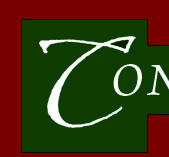 |
 |
||||||
|
Science: River Life The Concord River is home to many animals that depend on aquatic environments for their survival. One way to understand this is a food web.
Food webs are complex relationships between animals that eat plants (herbivores), animals that eat both plants and animals (omnivores), and animals that eat other animals (carnivores).
This is a food web sample illustrating the complex interrelationships of plants and animals. Plants are consumed by herbivores and omnivores, which are typically found low or in middle parts of the food chain. Carnivores and some omnivores prey on other consumers and are generally ranked higher on the food chain. A food web is made up of food chains. We can determine a food chain by identifying producers, consumers, and decomposers. For example, an insect will eat a plant, which will be eaten by a fish, which will then be eaten by a turtle. This is a producer, eaten by a primary consumer, eaten by a secondary consumer. When plants and animals die, or when scat falls to the ground, the energy and nutrients that make up their bodies are recycled by decomposers. The decomposers consist of fungus, bacteria, and invertebrates (easy to remember as the “FBI”). Without the FBI there would be no nutrient rich soil to support plant growth.
|


